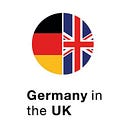Advent in Germany
The Advent season is eagerly awaited by many Germans as they enjoy the anticipation and preparation for the celebration of Christmas.
The origins of the Advent season celebrations go back to the time of Saint Gregory the Great (540–604), who encouraged the early Christian believers to prepare themselves for the birth of Jesus Christ during the Advent (Latin for “the coming”).
Time of hope and excitement
Many Germans make or buy an Advent wreath. Four candles are placed on the circlet, one for each Sunday during Advent. The candles represent light and hope which were traditionally meant to defend against evil forces during the long winter months. During their childhood, most Germans will have learnt a popular song called ‘Advent, Advent, ein Lichtlein brennt’, which is often recited when a candle is lit on the ‘Adventskranz’.
The people of Schlitz, a small town in eastern Hessen, mark Advent by transforming their 36m tower into the world’s largest Advent candle.
The 14th century tower is draped in red fabric and a 6m ‘flame’ consisting of 140 lightbulbs is mounted on the top of the tower, providing spectacular views of the town’s Christmas market and the surrounding area.
The tradition of Advent wreaths dates back to 1839, when the Hamburg theologian Johann Hinrich Wichern ran the ‘Rauhe Haus’, an old farmhouse which was used as a children’s home. He decorated a chandelier with fir branches and put 24 candles on it; one for each day in December until Christmas, similar to an Advent Calendar.
Advent calendars themselves were also invented in Germany, although today many countries with Christian denominations use them. They are supposed to boost the excitement for Christmas and shorten the waiting time. Most calendars are in rectangular shape with 24 doors, each containing sweets, poems or toys. However, in some cities even houses are turned into Advent calendars, where their windows depict colorful sceneries.
Adventszeit means Weihnachtsmarktzeit
If you’re out and about in the city centre, chances are you’ll end up in the midst of a Christmas market. And what would the Advent season be without them? The first Christmas markets, originally built around churches, took place in the 17th century. Today, the most popular items for sale are Christmas stollen, nativity figures sets, straw stars, tinsel, baubles and much more. Mulled wine, or Glühwein, a beverage of European origins usually made with red wine along with various mulling spices and sometimes raisins is a must have when at the Christmas market.
Ach du lieber Nikolaus
Sometimes you can meet Nikolaus (Father Christmas in Britain) at the Christmas market. He carries a large sack bulging with gifts for young and old and reads from a golden book in which he made a note of children’s behaviour during the year.
Children often render poems to give Nikolaus a treat. While he can be seen on many days in Advent not only at Christmas markets, but also at nurseries, school or office Christmas parties, 6 December is known as Nikolaustag.
The night before the 6th, German children anticipate an overnight visit from Nikolaus by scrubbing their shoes and leaving them in front of their doors in the hope that they will be filled with chocolates and sweets. Some families prefer to hang stockings by the fireplace instead of placing their shoes outside. Fortunately the anatagonist of Nikolaus, Krampus or Knecht Ruprecht, today is just an old wives’ tale, so every child can look forward to Nikolaustag.
Silent night
Another reason to be excited during Advent is of course, Christmas Eve itself. Under their glowing Christmas tree, children can find presents and in contrast to many other countries, open them all on the 24th. Some families like to go to church beforehand or have Christmas dinner.
Whereas especially on the 25th and 26th many celebrate with roast goose, carp, fondue, raclette or something similar, most Germans prefer an easier way of cooking on Christmas Eve: they simply eat potato salad with sausages.
Whatever is served, however, the quiet time with their families and loved ones is probably what the people in Germany are looking forward to most during Advent season.
